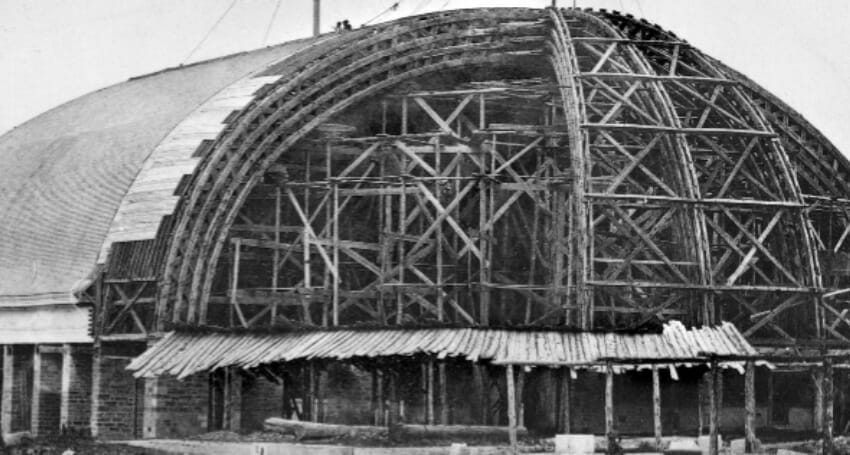Introduction
Civil engineering holds a unique and esteemed place in human history. As a profession, it has shaped the world around us, building the infrastructure we depend upon daily. This article will explore the captivating civil engineering history, its evolution, and its impact on the world.
Civil Engineering History: Earliest Practices
Civil engineering, as we know it today, didn’t exist in ancient times. However, many of the earliest practices of civil engineering were integral to establishing civilizations. These early civil engineering efforts were manifested in constructing roads, bridges, walls, water supply systems, and other public works.
From the advanced urban planning in the Indus Valley Civilization to the awe-inspiring Great Pyramids of Giza, our ancestors left countless examples of ancient historic civil engineering constructions that testify to the importance of this practice throughout history.

The Birth of Civil Engineering as a Profession
“civil engineering” emerged in the 18th century to differentiate non-military engineering from military engineering. This distinction marked the emergence of civil engineering as a distinct profession.
The most remarkable moment ever in civil engineering history occurred in 1818 when the Institution of Civil Engineers was founded in the United Kingdom. This professional body provided a platform for engineers to share knowledge and establish professional standards, significantly shaping the industry.
The Middle Ages and Civil Engineering
During the Middle Ages, civil engineering played a crucial role in shaping the architectural and infrastructural landscape of the time. One of the remarkable achievements during this period was the construction of impressive cathedrals and castles, showcasing the advanced skills of medieval civil engineers and craftsmen. The construction of these monumental structures required innovative techniques in stone masonry, vaulted ceilings, and buttressing, leading to the development of new engineering principles. Furthermore, the Middle Ages saw the rise of sophisticated water supply and sewage systems in cities, indicating significant advancements in hydraulic engineering. The era’s contributions to civil engineering laid the groundwork for future progress in the field, leaving a lasting impact on the infrastructure and construction practices that followed.
Civil Engineering versus Structural Engineering
Often, civil engineering is compared to structural engineering. While both are integral branches of the broader engineering field, there are distinctions. Civil engineering encompasses designing, constructing, and maintaining the physical and naturally built environment. This can include projects like roads, bridges, canals, dams, and buildings.
On the other hand, structural engineering is a speciality within civil engineering that focuses solely on designing and analyzing structures, ensuring they can withstand the stresses and pressures of their environment and remain safe, stable, and secure.

Significant Historic Civil Engineering Constructions
Historic civil engineering constructions include remarkable feats such as the Roman aqueducts, the Great Wall of China, and the Eiffel Tower. These structures underscore the evolution of engineering work and demonstrate how civil engineering has been instrumental in the progression of societies.
The Roman aqueducts, built around 312 BC, revolutionized water transportation, improving sanitation and quality of life. The Great Wall of China, built between the 3rd century BC and the 17th century AD, showcases the incredible capacity of civil engineering for defense purposes. The Eiffel Tower, completed in 1889, represents the evolution of civil engineering in the industrial era, using new materials like iron to reach unprecedented heights.

Civil Engineering Today: An Evolved Discipline
Over the centuries, civil engineering has evolved considerably. Today, it is a multifaceted discipline that includes several specialized sub-disciplines like environmental engineering, geotechnical engineering, structural engineering, transportation engineering, and much more.
In the 21st century, civil engineering faces new challenges and opportunities. Sustainability, resilience, and the use of advanced technologies such as AI and digital twins are now at the forefront of the profession.
Despite these advancements, the core of civil engineering remains the same: improving the quality of life through developing and maintaining essential infrastructure. Looking back at the history of civil engineering, we gain an appreciation for past achievements and a vision for future innovations.
Conclusion
In conclusion, the study of civil engineering history reveals the profound impact of this field throughout ancient and medieval times. Civil engineering involves utilizing scientific and technological knowledge to create and develop infrastructure projects that have a significant impact on societies.
From the great architectural wonders of the past to the intricate systems of water management and transportation, civil engineering has played a pivotal role in shaping our world. It is fascinating to explore the contributions of the world’s first engineering society and the evolution of civil engineering as a recognized and respected profession. Understanding our civil engineering history not only enriches our knowledge but also allows us to appreciate the remarkable engineering achievements of our ancestors.




